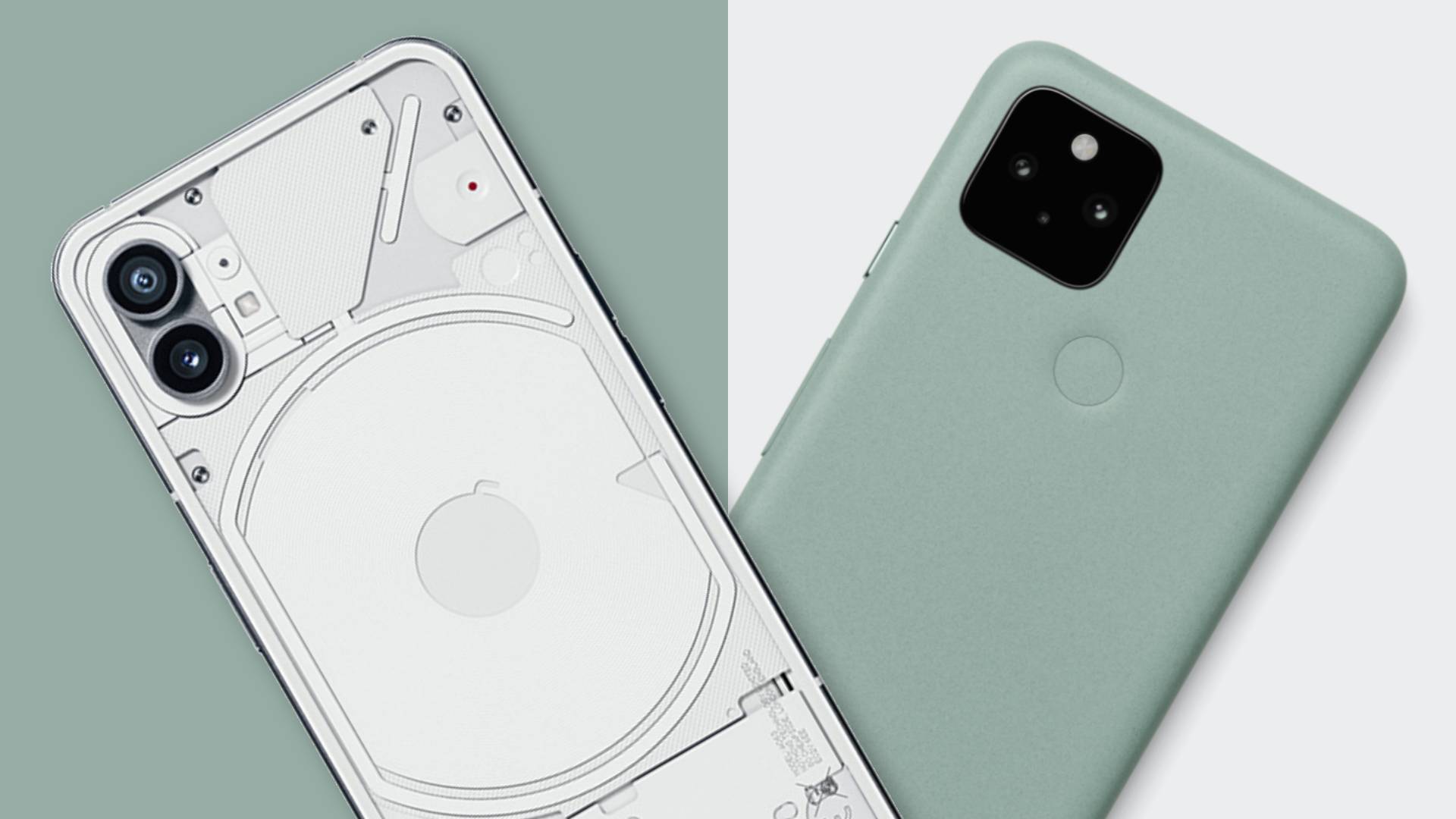Yes, the Nothing Phone (1) is a flagship – just look at the Pixel 5
Power does not a flagship make

Startup Nothing’s debut smartphone doesn’t launch until July 12, but – in characteristic fashion for businesses headed up by company CEO and co-founder, Carl Pei – official details of the Phone (1) have been served up piecemeal in recent months, with the latest tidbit being which chipset the phone is set to run on – a detail that’s left fans divided.
Nothing has already set a launch date for the Phone (1), shown off its distinct transparent-backed design – complete with standout glowing “Glyph” LED arrangement – confirmed that it won’t be launching in the US, given fans a taste of the Nothing OS user experience and, as of July 29, confirmed that the phone will run on a Snapdragon 778G+ SoC.
The Nothing approach
You’d think that – for a company that wants to ‘reinvent the smartphone’ – dressing its debut handset with mid-range silicon doesn’t bode well, especially for those comparing it to the best smartphones on the market. However, it’s time you stopped making that comparison.
The flagship phone archetype typically serves up “the best” that a manufacturer can muster: from display quality to camera ability, charging speeds to top-tier build quality, and killer performance.
While a Snapdragon 778G+ chipset might not be the best processor out there or even the most powerful offering in the current 7-series (that would be the Snapdragon 7 Gen 1), it doesn’t have to be. Nowadays, most mid-range silicon is so capable that the quality and fluidity of user experience delivered is indistinguishable from the more robust (and more costly) top-tier SoCs made by the likes of Qualcomm, MediaTek, and Samsung.
Learning from the pros
Nothing has already been transparent (no pun intended) about the intention of the Phone (1) as the hub of an ecosystem – the scope of which comes into focus gradually after the phone’s release. That approach, paired to the hardware we already know the device is set to use, reminds me of another high-profile handset; not the iPhone but Google’s Pixel 5.
Google’s 2020 lead Pixel was considered a flagship device when it launched and was pit against the very best the competition had to offer. While it didn’t have as high a resolution display as Samsung’s then top-dog or as powerful internals as the iPhone 12 that launched the same year, such “shortcomings” didn’t make it less than a flagship, at least in the eyes of users.
Like the Nothing Phone (1), it too ran on 7-series Snapdragon hardware – the Snapdragon 765G, which found favor in other flagship-class devices of the time, such as the LG Wing – and delivered a superb real-world experience, underpinned by a clean take on Android, as well as integrated smart home functionality built right into the quick settings menu.
While Google has since moved away from Qualcomm’s hardware, its homemade Tensor chips powering the current Pixel 6 and Pixel 6 Pro also prioritize a more robust user experience over raw power or gaming prowess.
A decision not taken lightly
In his interview with Input, alongside confirming the Snapdragon 778G+’s place in the Nothing Phone (1)’s spec sheet, Pei also put the team’s decision to use this particular hardware down to “performance, power consumption, and cost.” Describing more powerful chips as delivering “diminishing returns.”
While that last statement could come back to bite Nothing, especially if it were to release a future device with higher-end hardware, the approach being taken with the Phone (1) seems considered, confident, and, if the end result resembles anything like how the Pixel 5 turned out, wholly valid.
Thankfully, we don’t have long left to wait in order to get hands-on with the Phone (1), but in the meantime, there are a host of other top Android phones that might suit those currently browsing the market.
Get daily insight, inspiration and deals in your inbox
Sign up for breaking news, reviews, opinion, top tech deals, and more.

Alex joined as TechRadar's Senior Phones Editor in June 2022, but brings over a decade's worth of experience to the role, with an expertise in smartphones, tablets and wearables. He's covered keynotes hosted by the biggest brands and attended the launches for some of the most influential mobile products of the last few years. His experience was amassed at some of the most reputable consumer technology publications out there, including GSMArena, TechAdvisor and Trusted Reviews.